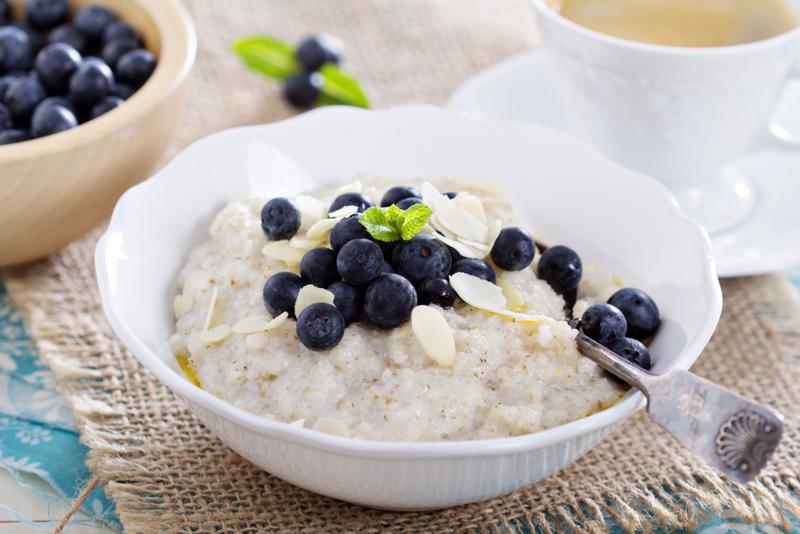Students enrolled in cooking courses need to stay aware of the ingredients and dishes that are capturing the interest of diners. Using ancient grains in cooking is one trend that has inspired demand in restaurants and grocery stores over recent years. What makes quinoa, freekeh, spelt, kamut, amaranth and farro “ancient” is that they have not been greatly altered by selective breeding over thousands of years, unlike other grains such as wheat or rice.
In the National Restaurant Association’s annual survey of professional chefs, 62 percent of the respondents said ancient grains would continue to be a hot trend in 2017. That makes it worthwhile to learn to prepare dishes that spotlight these ingredients. With some creativity, you can develop a variety of meals that take full advantage of the tastes and textures of whole grains.
Liven up a light soup with quinoa
Quinoa is probably the most familiar of these ancient ingredients since it’s become a common sight in kitchens across the country. This gluten-free grain’s advantages include fast cooking and high protein, fiber and iron contents. Cooking Light suggested combining quinoa with an array of vegetables in soup.
“Quinoa cooks fast and is high in protein, fiber and iron.”
Place a cup of quinoa on a baking sheet. Toast in an oven set to 325 degrees Fahrenheit for half an hour, stirring occasionally. Meanwhile, begin warming a stockpot on medium heat, adding olive oil, onion, carrot, bell pepper and garlic.
Cover the pot and cook for about 10 minutes, stirring and checking for the vegetables to grow tender. Remove the cover and mix in cumin and rosemary. After a minute, pour in chicken stock, the quinoa, potatoes and celery root.
Raise the heat, bringing the contents to a boil, before lowering it back to medium and covering again. After about 12 minutes, add Brussels sprouts and zucchini and cook a couple more minutes. Finish off the soup with some salt and parsley and serve.
Turn farro into a simple, satisfying side
Farro is known for its nutty flavor, crunchy taste and nutrients like Vitamin B3, zinc and fiber. When you’re preparing the grain, it’s a good idea to allow time for it to soak overnight. Otherwise, you’re in for either a lengthy cooking process, an overly chewy dish or a disappointing mess
Farro works exceptionally well in a variety of soups and salads, but NPR offered a recipe from cookbook author Toni Lydecker that gets a little more inventive. Cook the farro in water until it’s tender, and toast a quarter cup of walnuts. Cut two large zucchini in half, removing the ends, and simmer them in a large baking dish filled with water for 15 to 20 minutes.
Scoop the pulp out of the zucchini and set it aside. Lightly salt the shells, and chop the pulp. Saute garlic and shallots in extra-virgin olive oil and butter over medium heat. Stir in the pulp before throwing in the farro and walnuts, plus thyme, goat cheese and black pepper.
After the mixture cooks for two or three minutes, use it to stuff the zucchini shells. Bake at 350 degrees for about 15 minutes. Add some tomato sauce before serving.
 You can use amaranth to make a tasty porridge.
You can use amaranth to make a tasty porridge.Amaranth porridge is just right
Once a staple of the Aztec diet, amaranth has a nutty taste and contains plenty of protein and iron. The small seeds can be popped for a snack, add sweetness when mixed with rice or thicken up a soup. On the other hand, as the New York Times pointed out, Austin culinary arts students can easily track down a bag and put it to use in a porridge recipe for a simple breakfast.
First, bring half a cup of amaranth in water to a boil. Simmer, covered, for half an hour, stirring regularly to keep the grain from sticking. Mix in milk and maple syrup or brown sugar, and then stir until the combination becomes creamy.
Ancient grains have more than just history behind them. These ingredients have gained lasting popularity among diners, thanks to their loads of nutrients and versatility in the kitchen. For those reasons, anyone in online culinary certificate programs should start thinking beyond rice, corn and wheat and try making a few dishes that prominently feature ancient grains.



